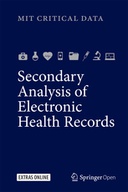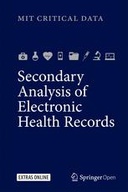Explore

Secondary Analysis of Electronic Health Records
MIT Critical Data
2016
This book, written with support from the National Institute for Biomedical Imaging and Bioengineering through grant R01 EB017205-01A1, is meant to serve as an illustrative guide for scientists, engineers, and clinicians that are interested in performing retrospective research using data from EHRs. It is divided into three major parts. The first part of the book paints the current landscape and describes the body of knowledge that dictates clinical practice guidelines, including the limitations and the challenges. This sets the stage for presenting the motivation behind the secondary analysis of EHR data. The part also describes the data landscape, who the key players are, and which types of databases are useful for which kinds of questions. Finally, the part outlines the political, regulatory and technical challenges faced by clinical informaticians, and provides suggestions on how to navigate through these challenges. In the second part, the process of parsing a clinical question into a study design and methodology is broken down into five steps. The first step explains how to formulate the right research question, and bring together the appropriate team. The second step outlines strategies for identifying, extracting, Oxford, and preprocessing EHR data to comprehend and address the research question of interest. The third step presents techniques in exploratory analysis and data visualization. In the fourth step, a detailed guide on how to choose the type of analysis that best answers the research question is provided. Finally, the fifth and final step illustrates how to validate results, using cross validation, sensitivity analyses, testing of falsification hypotheses, and other common techniques in the field. The third, and final part of the book, provides a comprehensive collection of case studies. These case studies highlight various aspects of the research pipeline presented in the second part of the book, and help ground the reader in real world data analyses. We have written the book so that a reader at different levels may easily start at different parts. For the novice researcher, the book should be read from start to finish. For individuals who are already acquainted with the challenges of clinical informatics, but would like guidance on how to most effectively perform the analysis, the book should be read from the second part onward. Finally, the part on case studies provides project-specific practical considerations on study design and methodology and is recommended for all readers.
This book is included in DOAB.
Why read this book? Have your say.
You must be logged in to comment.
Links
DOI: 10.1007/978-3-319-43742-2web: https://link.springer.com/book/10.1007/978-3-319-43742-2
Editions


